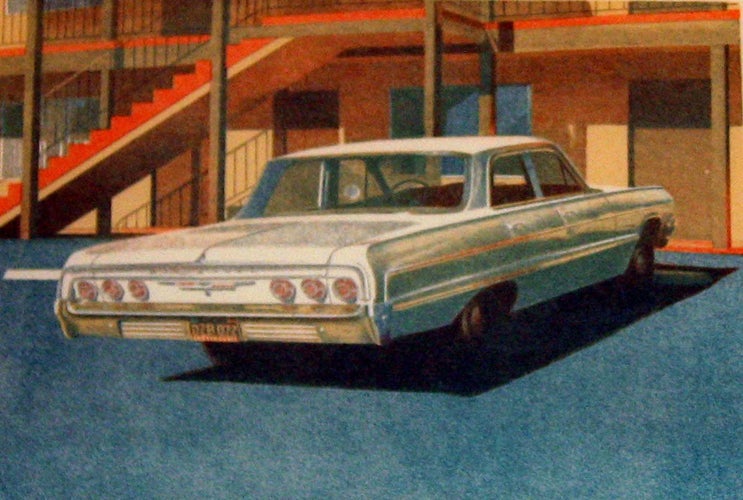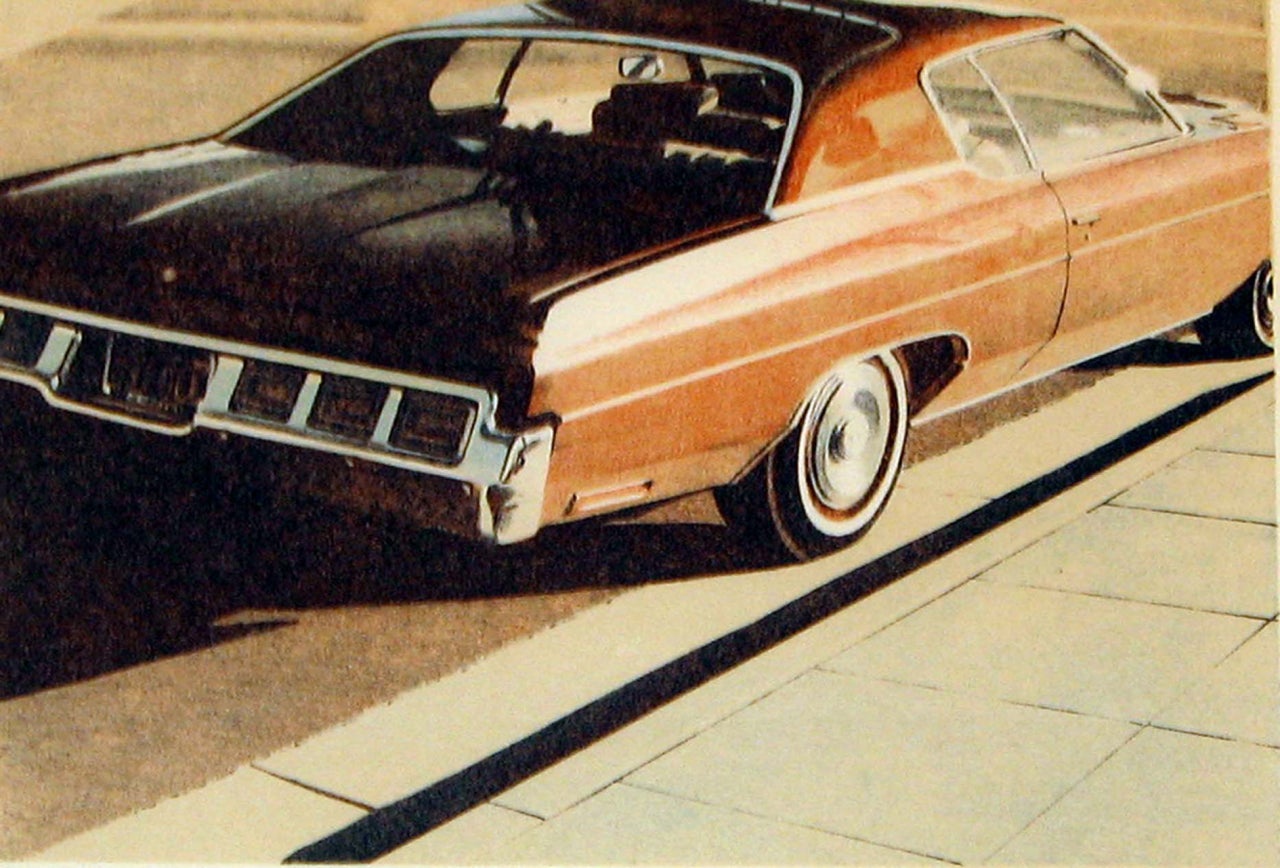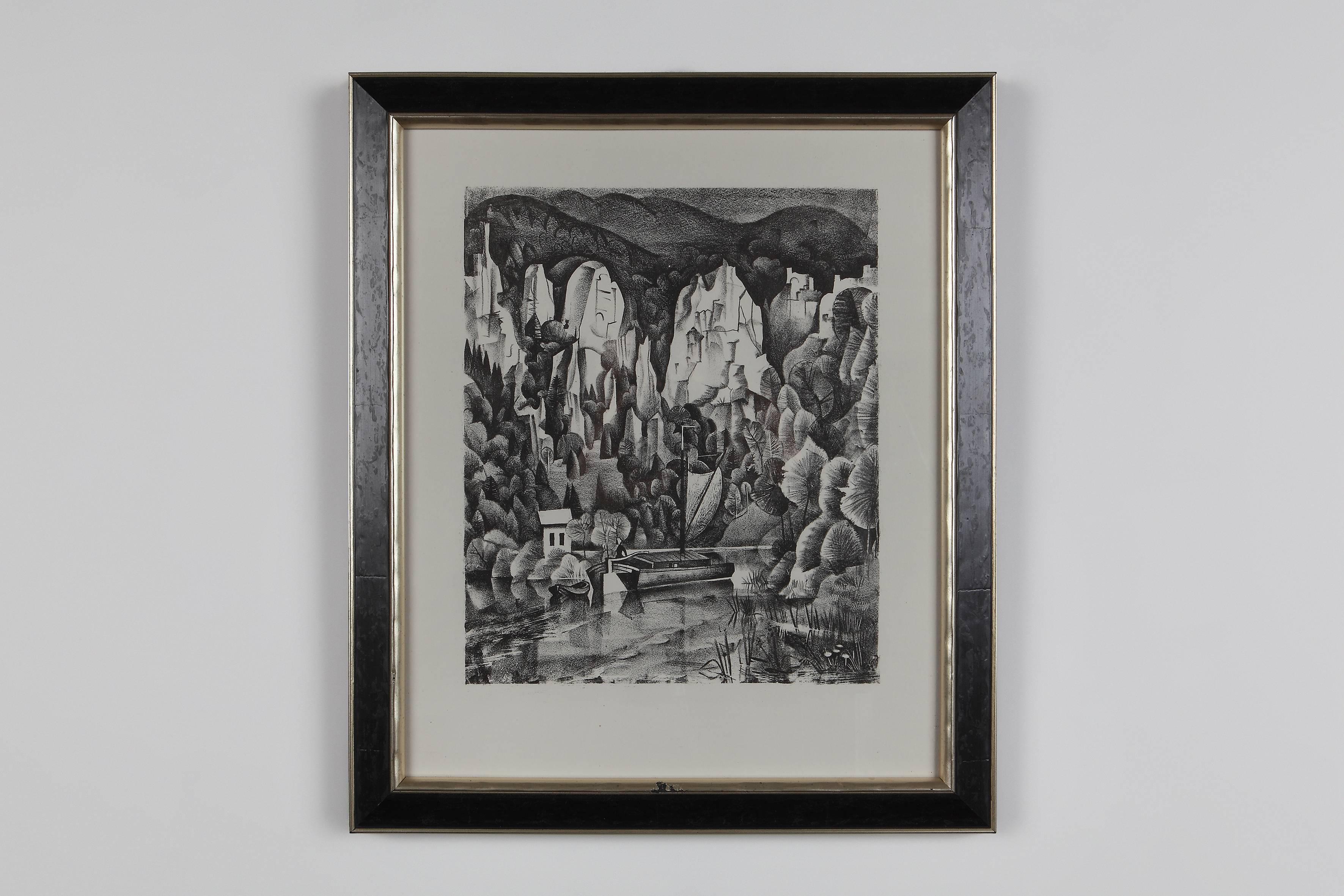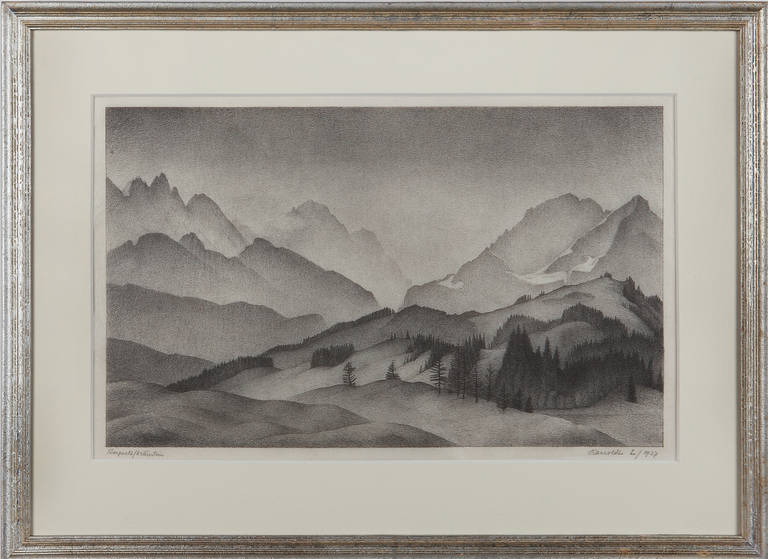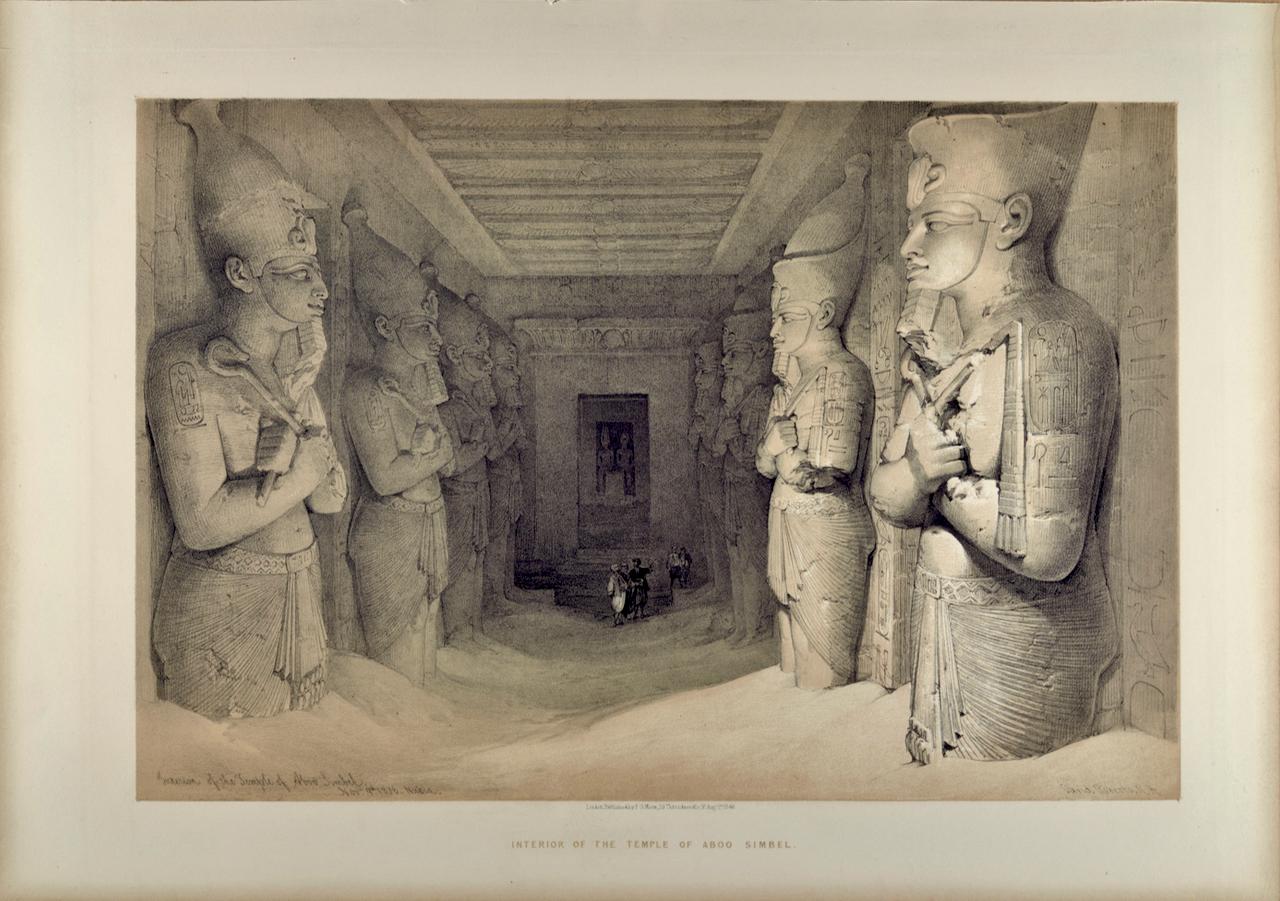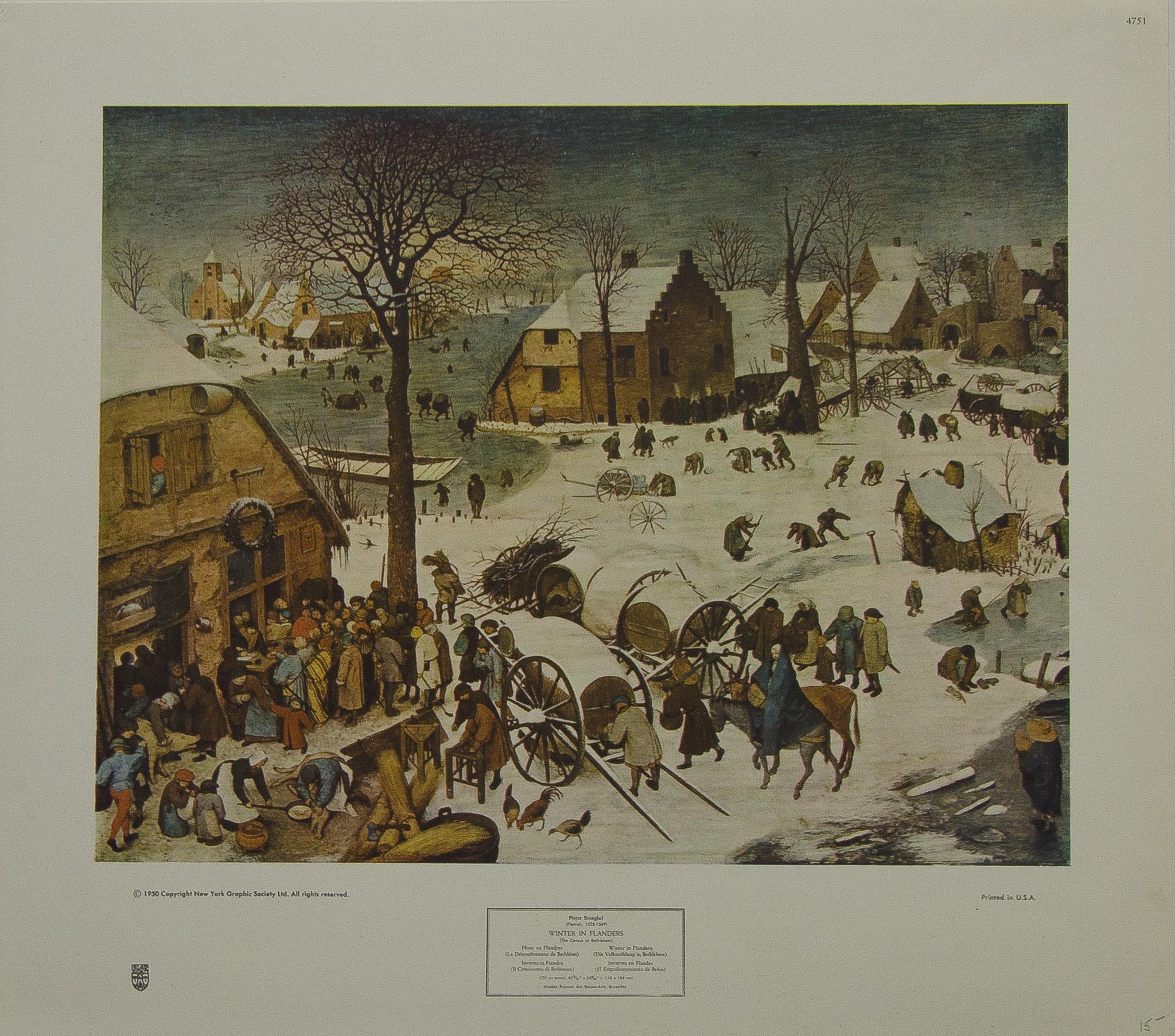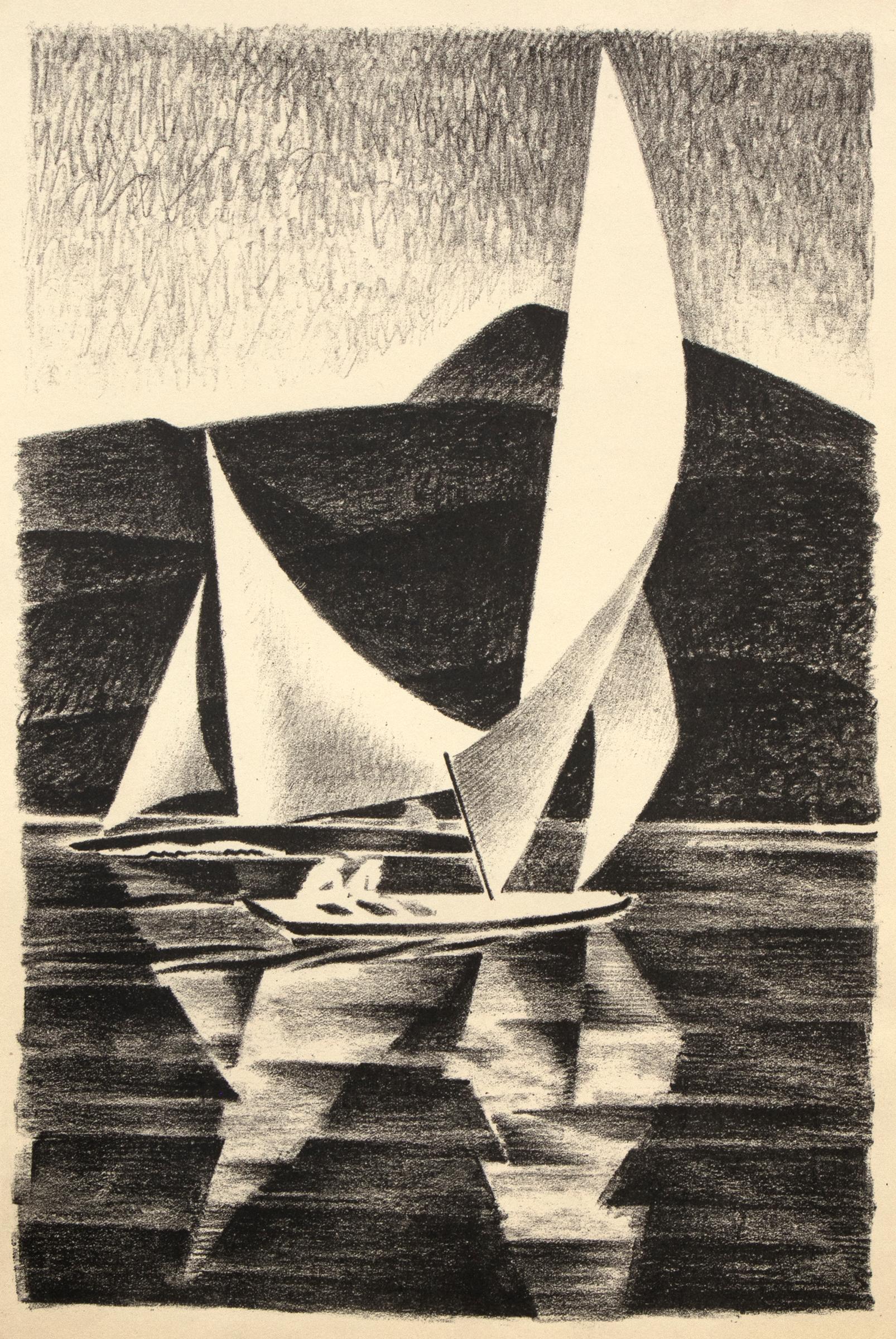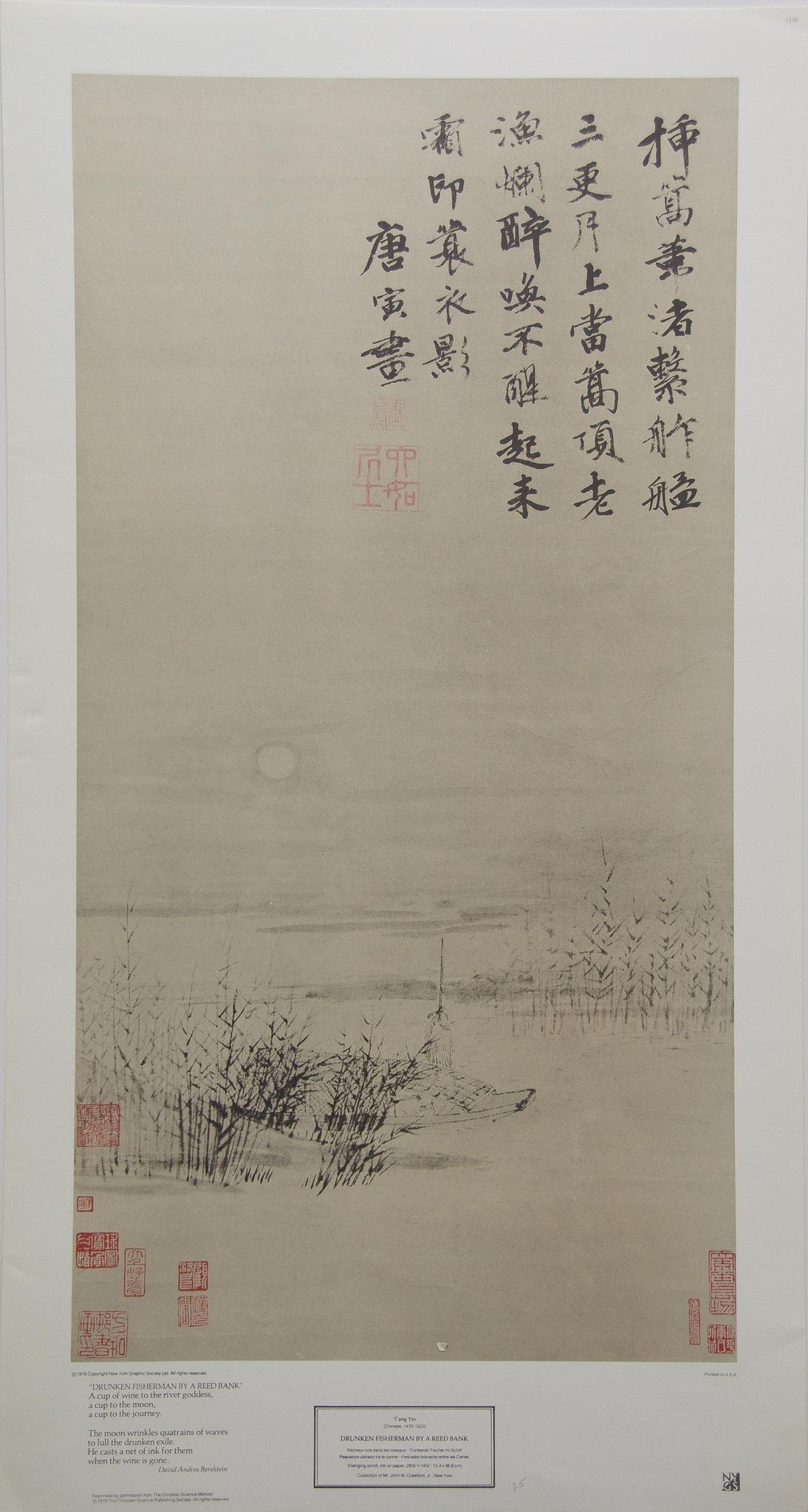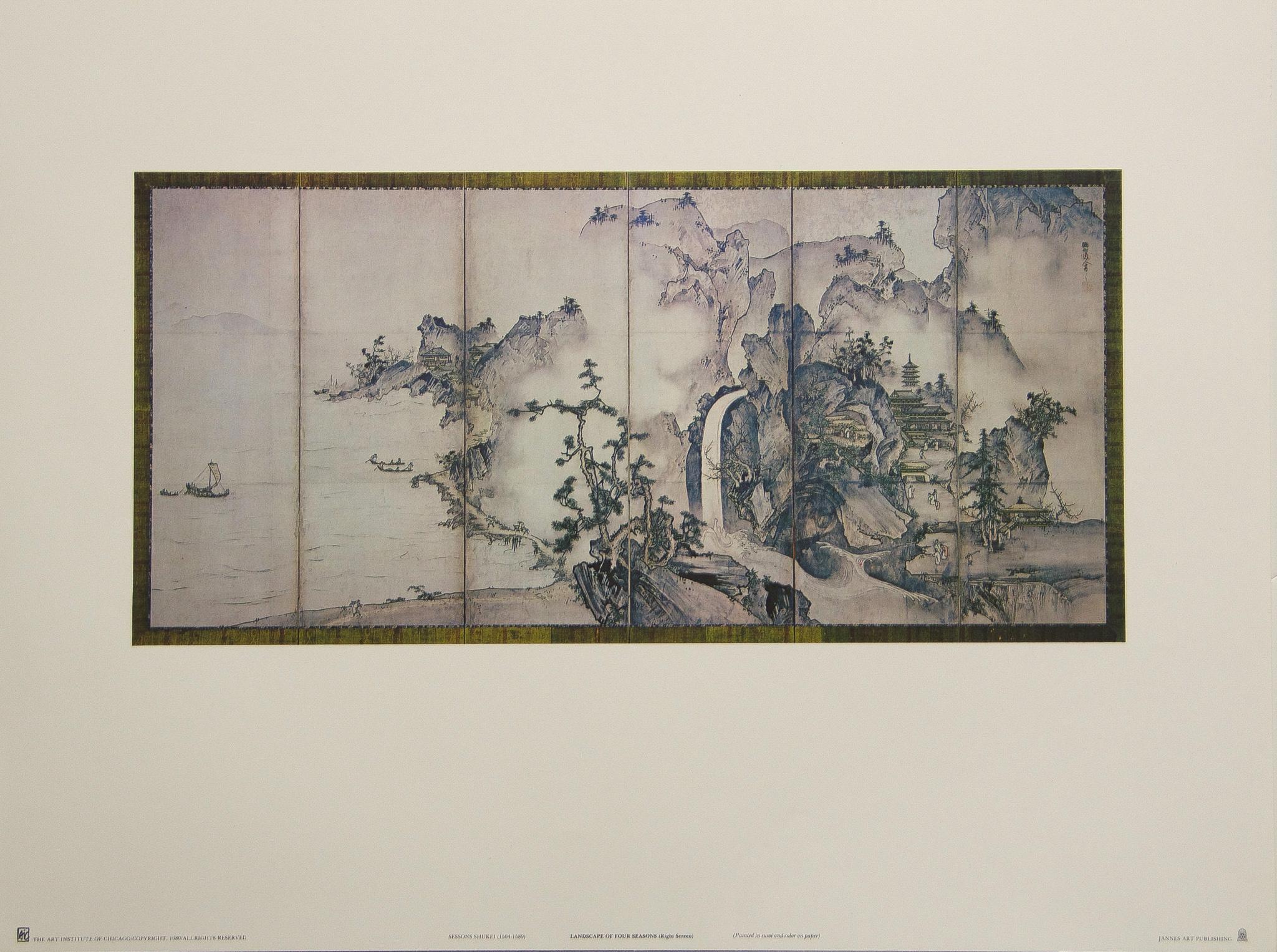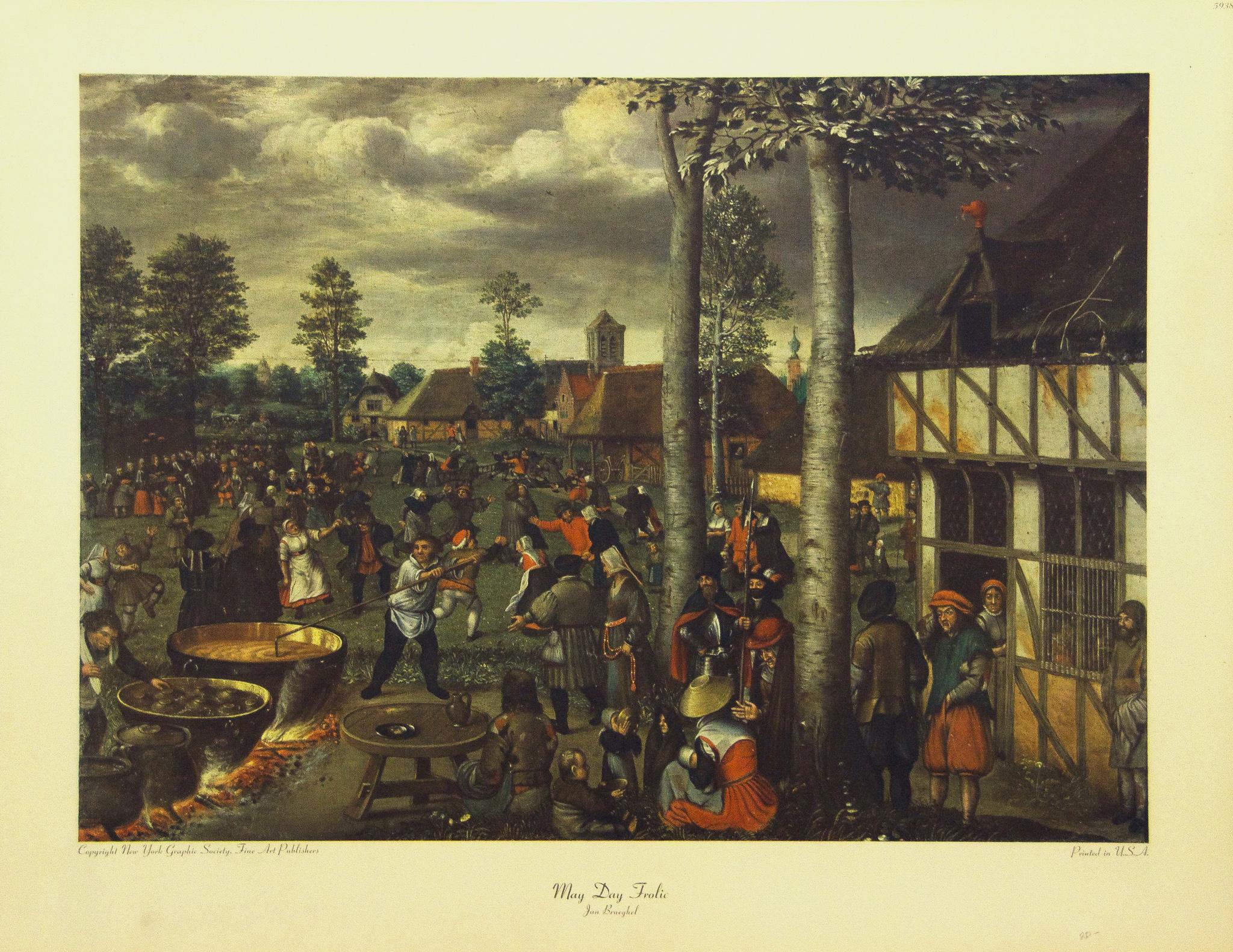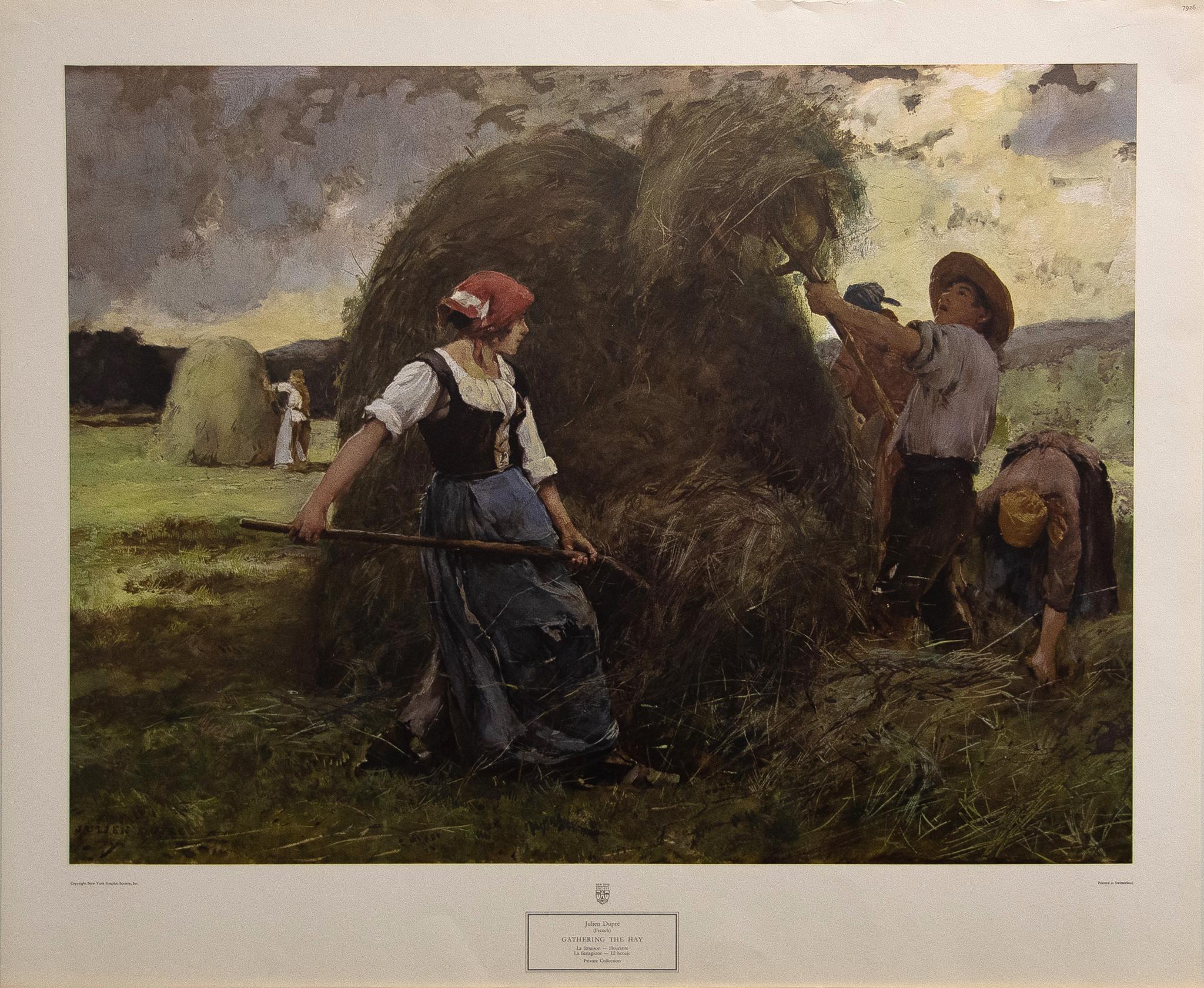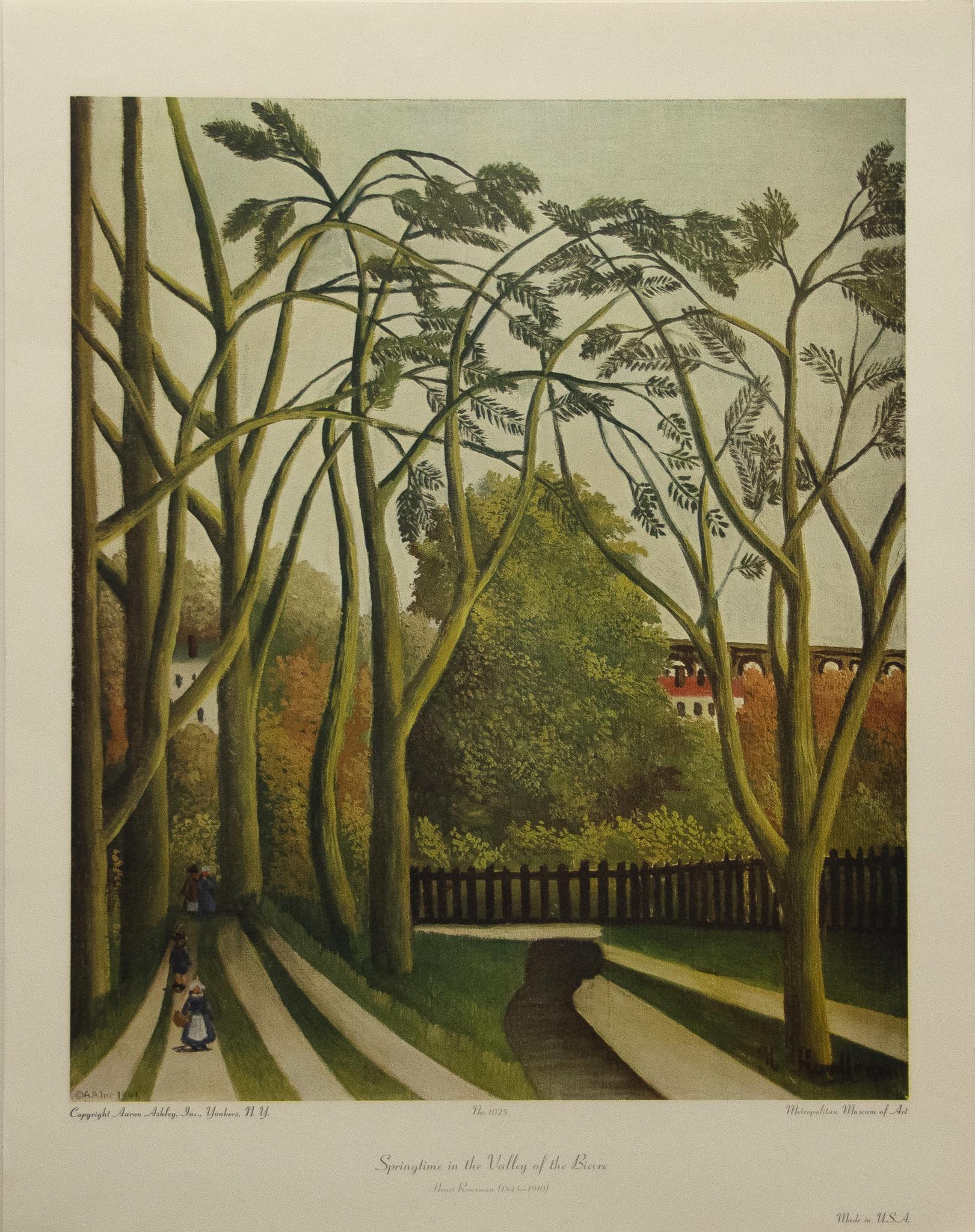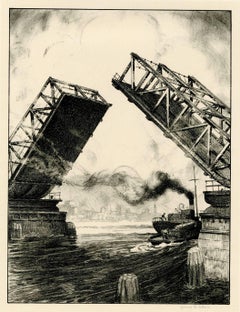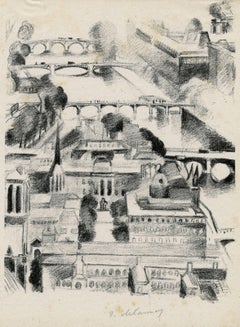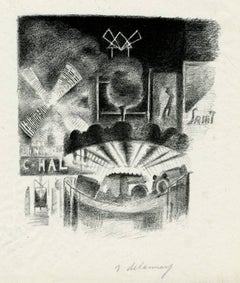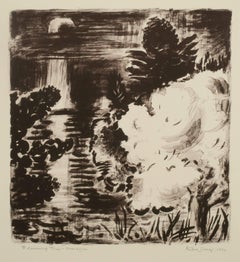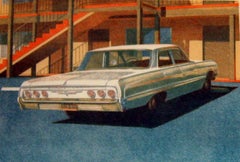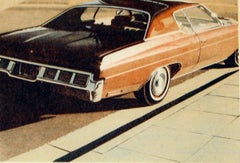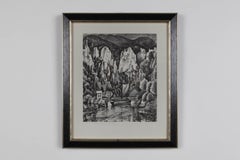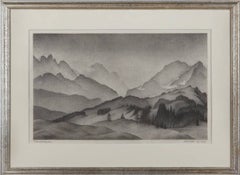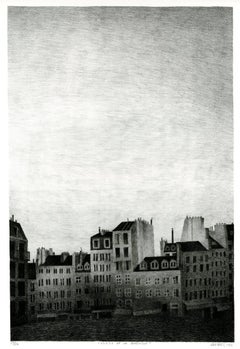
Place de la Bastille
View Similar Items
Want more images or videos?
Request additional images or videos from the seller
1 of 12
Mario AvatiPlace de la Bastille1952
1952
About the Item
- Creator:Mario Avati (1921 - 2009, French)
- Creation Year:1952
- Dimensions:Height: 15.63 in (39.71 cm)Width: 10.5 in (26.67 cm)
- Medium:
- Period:
- Condition:
- Gallery Location:Fairlawn, OH
- Reference Number:Seller: FA96551stDibs: LU14015084562
Mario Avati
Mario Avati along with fellow artist Marc Chagall attended the Ecole des Beaux-Arts in Paris. He began printmaking in the 1940s and later focused on mezzotint, a technique that would bring Avanti significant international recognition for his discipline. As a fellow at the Tamarind Lithography Workshop in the 1960s, he furthered his exploration of mezzotint, with the interplay of intense blackness with gradations of light that define the mezzotint process.
About the Seller
5.0
Recognized Seller
These prestigious sellers are industry leaders and represent the highest echelon for item quality and design.
Platinum Seller
Premium sellers with a 4.7+ rating and 24-hour response times
Established in 1978
1stDibs seller since 2013
786 sales on 1stDibs
Associations
International Fine Print Dealers Association
Authenticity Guarantee
In the unlikely event there’s an issue with an item’s authenticity, contact us within 1 year for a full refund. DetailsMoney-Back Guarantee
If your item is not as described, is damaged in transit, or does not arrive, contact us within 7 days for a full refund. Details24-Hour Cancellation
You have a 24-hour grace period in which to reconsider your purchase, with no questions asked.Vetted Professional Sellers
Our world-class sellers must adhere to strict standards for service and quality, maintaining the integrity of our listings.Price-Match Guarantee
If you find that a seller listed the same item for a lower price elsewhere, we’ll match it.Trusted Global Delivery
Our best-in-class carrier network provides specialized shipping options worldwide, including custom delivery.More From This Seller
View AllThe Bridge
By James Allen
Located in Fairlawn, OH
The Bridge (New York Harbor)
Lithograph, 1936-7
Signed in pencil l.r., (see photo)
titled lower left edge of sheet
Reference: Not in Ryan
Edition: Very small
Note: Extremely rare. ...
Category
1930s Landscape Prints
Materials
Lithograph
Ile de la Cite, Paris
By Robert Delaunay
Located in Fairlawn, OH
Le Palais de Justice (Ile de la Cite, Paris)
Lithograph printed on chine paper, 1926
Signed in pencil; Atelier blindstamp l.l. (see photo)
Edition: Rare proof on chine, outside of th...
Category
1920s Cubist Landscape Prints
Materials
Lithograph
Untitled (Moulin Rouge and other Paris landmarks)
By Robert Delaunay
Located in Fairlawn, OH
Untitled (Moulin Rouge and other Paris landmarks)
Lithograph, 1926
Rare signed in pencil proof on chine paper (see photo)
Lithograph from Joseph Delteil's "Allo, Paris," published by...
Category
1920s Modern Landscape Prints
Materials
Lithograph
Flowering Tree -- Moonlight
By Karl Schrag
Located in Fairlawn, OH
Signed, titled, and dated in pencil by the artist; The Print Club of Cleveland stamp lower left
Edition: 260
The Print Club of Cleveland Publication No. 69, 1991
Printer: Am...
Category
1990s Landscape Prints
Materials
Lithograph
The Golden Gate
By Adolf Arthur Dehn
Located in Fairlawn, OH
The Golden Gate
Lithograph on wove paper watermarked GC, 1940
Signed in pencil by the artist (see photo)
Publisher: Associated American Artists
Edition: 189, unnumbered
The image depicts The Golden Gate Bridge which connects San Francisco and Marin County, California
References And Exhibitions:
Illustrated: Adams, The Sensuous Life of Adolf Dehn, Fig. 13.17, page 324
Reference: L & O 325
AAA Index 391
Adolf Dehn, American Watercolorist and Printmaker, 1895-1968
Adolf Dehn was an artist who achieved extraordinary artistic heights, but in a very particular artistic sphere—not so much in oil painting as in watercolor and lithography. Long recognized as a master by serious print collectors, he is gradually gaining recognition as a notable and influential figure in the overall history of American art.
In the 19th century, with the invention of the rotary press, which made possible enormous print runs, and the development of the popular, mass-market magazines, newspaper and magazine illustration developed into an artistic realm of its own, often surprisingly divorced from the world of museums and art exhibitions, and today remains surprisingly overlooked by most art historians. Dehn in many regards was an outgrowth of this world, although in an unusual way, since as a young man he produced most of his illustrative work not for popular magazines, such as The Saturday Evening Post, but rather for radical journals, such as The Masses or The Liberator, or artistic “little magazines” such as The Dial. This background established the foundation of his outlook, and led later to his unique and distinctive contribution to American graphic art.
If there’s a distinctive quality to his work, it was his skill in introducing unusual tonal and textural effects into his work, particularly in printmaking but also in watercolor. Jackson Pollock seems to have been one of many notable artists who were influenced by his techniques.
Early Years, 1895-1922
For an artist largely remembered for scenes of Vienna and Paris, Adolf Dehn’s background was a surprising one. Born in Waterville, Minnesota, on November 22, 1895, Dehn was the descendent of farmers who had emigrated from Germany and homesteaded in the region, initially in a one-room log cabin with a dirt floor. Adolf’s father, Arthur Clark Dehn, was a hunter and trapper who took pride that he had no boss but himself, and who had little use for art. Indeed, during Adolf’s boyhood the walls of his bedroom and the space under his bed were filled with the pelts of mink, muskrats and skunks that his father had killed, skinned and stretched on drying boards. It was Adolf’s mother, Emilie Haas Dehn, a faithful member of the German Lutheran Evangelical Church, who encouraged his interest in art, which became apparent early in childhood. Both parents were ardent socialists, and supporters of Eugene Debs. In many ways Dehn’s later artistic achievement was clearly a reaction against the grinding rural poverty of his childhood.
After graduating from high school in 1914 at the age of 19—an age not unusual in farming communities at the time, where school attendance was often irregular—Dehn attended the Minneapolis School of Art from 1914 to 1917, whose character followed strongly reflected that of its director, Munich-trained Robert Kohler, an artistic conservative but a social radical. There Dehn joined a group of students who went on to nationally significant careers, including Wanda Gag (later author of best-selling children’s books); John Flanagan (a sculptor notable for his use of direct carving) Harry Gottlieb (a notable social realist and member of the Woodstock Art Colony), Elizabeth Olds (a printmaker and administrator for the WPA), Arnold Blanch (landscape, still-life and figure painter, and member of the Woodstock group), Lucille Lunquist, later Lucille Blanch (also a gifted painter and founder of the Woodstock art colony), and Johan Egilrud (who stayed in Minneapolis and became a journalist and poet).
Adolf became particularly close to Wanda Gag (1893-1946), with whom he established an intense but platonic relationship. Two years older than he, Gag was the daughter of a Bohemian artist and decorator, Anton Gag, who had died in 1908. After her husband died, Wanda’s mother, Lizzi Gag, became a helpless invalid, so Wanda was entrusted with the task of raising and financially supporting her six younger siblings. This endowed her with toughness and an independent streak, but nonetheless, when she met Dehn, Wanda was Victorian and conventional in her artistic taste and social values. Dehn was more socially radical, and introduced her to radical ideas about politics and free love, as well as to socialist publications such as The Masses and The Appeal to Reason.
Never very interested in oil painting, in Minneapolis Dehn focused on caricature and illustration--often of a humorous or politically radical character. In 1917 both Dehn and Wanda won scholarships to attend the Art Students League, and consequently, in the fall of that year both moved to New York. Dehn’s art education, however, ended in the summer of 1918, shortly after the United States entered World War I, when he was drafted to serve in the U. S. Army. Unwilling to fight, he applied for status as a conscientious objector, but was first imprisoned, then segregated in semi-imprisonment with other Pacifists, until the war ended. The abuse he suffered at this time may well explain his later withdrawal from taking political stands or making art of an overtly political nature. After his release from the army, Dehn returned to New York where he fell under the spell of the radical cartoonist Boardman Robinson and produced his first lithographs. He also finally consummated his sexual relationship with Wanda Gag.
The Years in Europe: 1922-1929
In September of 1921, however, he abruptly departed for Europe, arriving in Paris and then moving on to Vienna. There in the winter of 1922 he fell in love with a Russian dancer, Mura Zipperovitch, ending his seven-year relationship with Wanda Gag. He and Mura were married in 1926. It was also in Vienna that he produced his first notable artistic work.
Influenced by European artists such as Jules Pascin and Georg Grosz, Dehn began producing drawings of people in cafes, streets, and parks, which while mostly executed in his studio, were based on spontaneous life studies and have an expressive, sometimes almost childishly wandering quality of line. The mixture of sophistication and naiveté in these drawings was new to American audiences, as was the raciness of their subject matter, which often featured pleasure-seekers, prostitutes or scenes of sexual dalliance, presented with a strong element of caricature. Some of these drawings contain an element of social criticism, reminiscent of that found in the work of George Grosz, although Dehn’s work tended to focus on humorous commentary rather than savagely attacking his subjects or making a partisan political statement. Many Americans, including some who had originally been supporters of Dehn such as Boardman Robinson, were shocked by these European drawings, although George Grocz (who became a friend of the artist in this period) admired them, and recognized that Dehn could also bring a new vision to America subject matter. As he told Dehn: “You will do things in America which haven’t been done, which need to be done, which only you can do—as far at least as I know America.”
A key factor in Dehn’s artistic evolution at this time was his association with Scofield Thayer...
Category
1940s American Realist Landscape Prints
Materials
Lithograph
The Columns of Herakles
By Ossip Zadkine
Located in Fairlawn, OH
The Columns of Herakles
Lithograph in Grey printed Zerkall-Vellum paper, 1960
Signed in pencil by the artist 'O. Zadkine' at the lower right corner (see photo)
Numbered in pencil 102...
Category
1960s Surrealist Landscape Prints
Materials
Lithograph
You May Also Like
'64 Impala, from Four Chevies
By Robert Bechtle
Located in San Francisco, CA
Robert Bechtle was born in 1932 in San Francisco and raised in Alameda. He studied graphic design and painting at the California College of Arts and Crafts in Oakland, earning his ...
Category
1970s Contemporary Prints and Multiples
Materials
Lithograph
Price Upon Request
'71 Caprice, from Four Chevies
By Robert Bechtle
Located in San Francisco, CA
Edition of 60
Lithograph in colors
Plate: 8 1/2 x 11 inches
Sheet: 13 x 17 inches
Robert Bechtle was born in 1932 in San Francisco and raised in Alameda. He studied graphic des...
Category
1970s Prints and Multiples
Materials
Lithograph
Price Upon Request
Karl Holtz Lithograph "Flusslandschaft" ( River Landscape )
By Karl Holtz
Located in Berlin, DE
Lithograph on wove paper, 1920s by Karl Holtz ( Germany ). The unsigned lithograph is probably a later, possibly posthumous print. Black and white gold frame...
Category
Early 20th Century Landscape Prints
Materials
Lithograph
Lithograph "Bergwelt / Wetterstein" by Alexander Kanoldt, 1937
By Alexander Kanoldt
Located in Berlin, DE
Lithograph on China hand-made paper by Alexander Kanoldt ( 1881-1939 ), Germany, 1937. Proof copy.
Signed and dated lower right: Kanoldt L / 1937. Inscribed lower left: Bergwelt / W...
Category
1930s Landscape Prints
Materials
Lithograph
Interior of the Temple Abu Simbel, Egypt: A 19th C. Lithograph by David Roberts
By David Roberts
Located in Alamo, CA
This is an original 19th century duotone lithograph entitled "Interior of the Temple of Aboo Simbel" by David Roberts, from his Egypt and Nubia volumes of the large folio edition, pu...
Category
1840s Realist Landscape Prints
Materials
Lithograph
"Winter in Flanders" by Pieter Brueghel, Limited Edition Litho, Printed in USA.
By Pieter Bruegel the Elder
Located in Clinton Township, MI
"Winter in Flanders" by Pieter Brueghel, Limited Edition Litho, 4751
Published by New York Graphic Society, 1950
Printed in USA.
Measures 16 in x 18 in
Print is in good/fair condition
Category
20th Century Landscape Prints
Materials
Lithograph
